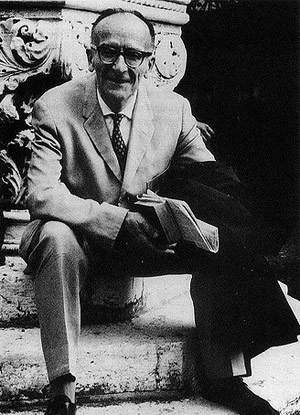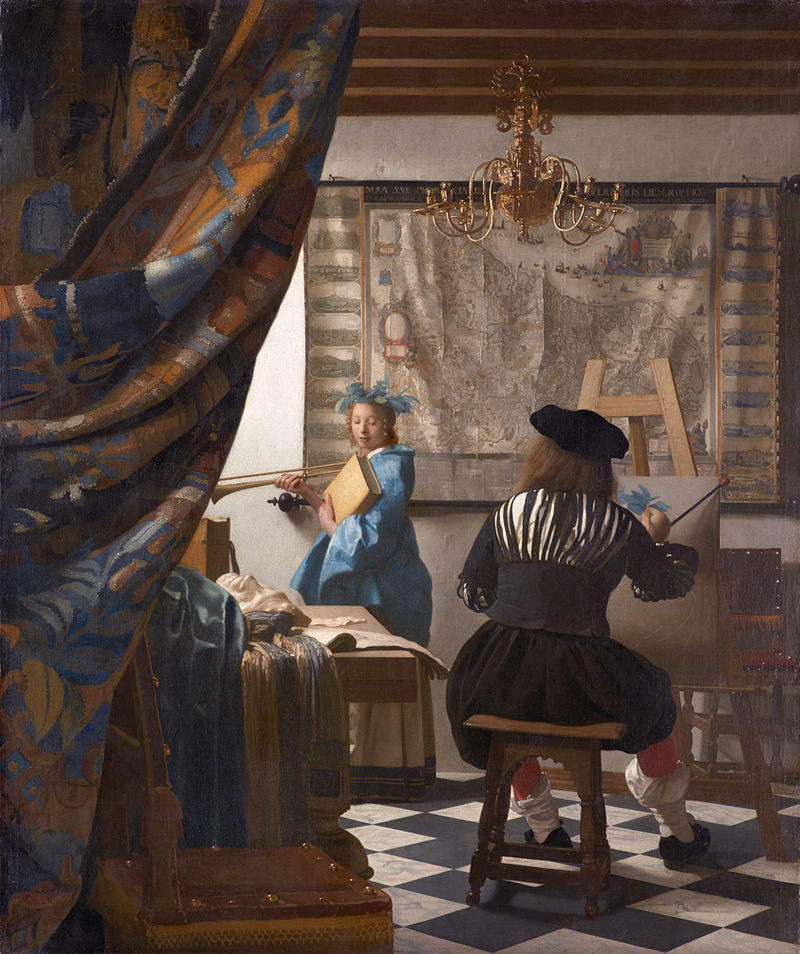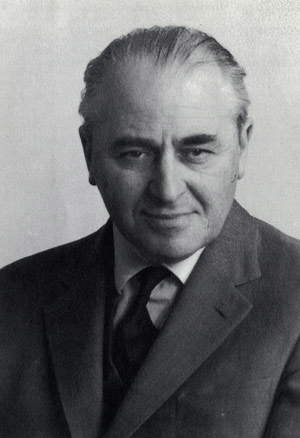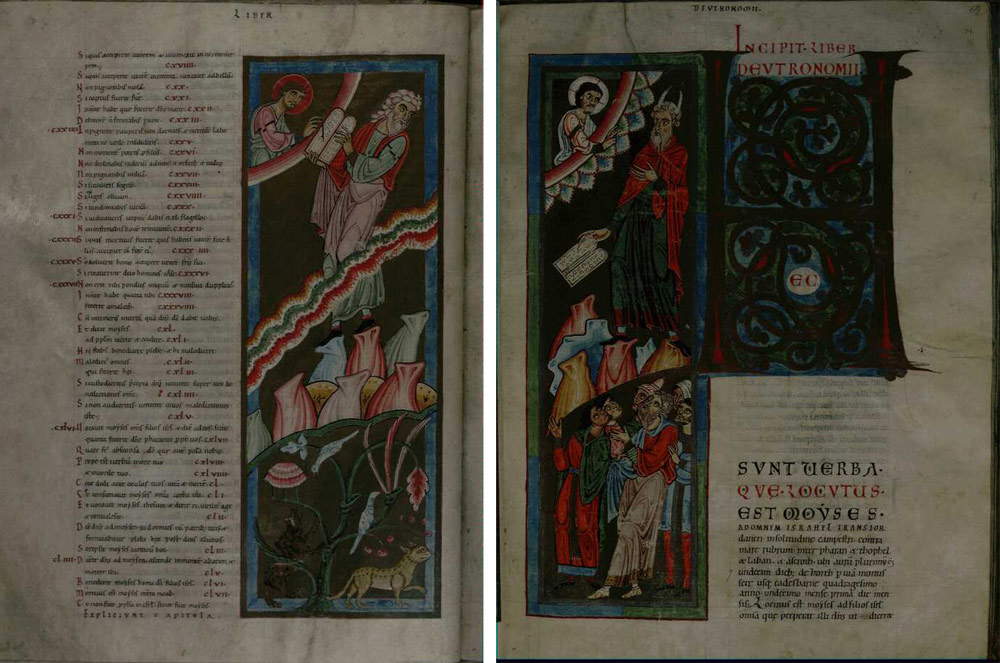History of art criticism: the New School of Vienna (Hans Sedlmayr, Otto Pächt)
When Alois Riegl presented in 1901 his concept of Kunstwollen, which we had discussed in the article devoted to the Vienna School of which Riegl himself was one of the leading exponents, a clear definition of what this “will to art” was through which each civilization would create its own artistic products was still lacking. In his seminal essay Die spätrömische Kunstindustrie nach den Funden in Österreich (Late Roman Artistic Industry according to Findings in Austria), the Austrian scholar expressed himself in such terms about the concept of Kunstwollen: "all human endeavors have the aim of endowing the relationship between man and the world with satisfactory forms, within and beyond the individual. Kunstwollen regulates the relationship between man and the appearance of things. Art expresses the way man sees things that have form or color, while Kunstwollen expresses the way man imagines these things. For man is not only a passive, sensory receptacle, but also an active being, who desires, who wants to interpret the world in manners that may differ according to peoples, regions, and epochs." However, it had not appeared clear within what terms this Kunstwollen should be circumscribed, which, for Riegl, was necessary to explain theevolution of styles and the flourishing of artistic civilizations.
There were thus several attempts to define the Riegl Kunstwollen more concretely. For Czech art historian Karl Swoboda (Prague, 1889 - Rekawinkel, 1977) the concept can be summarized as an "internal principle that organizes the work of art, which must be discovered beyond stylistic values and must be explained within the terms of the Weltanschauung, worldview, of a particular epoch." For Wilhelm Worringer (Aachen, 1881 Munich, 1965), on the other hand, it is something that has to do with the cultural sensibility of a people and is filtered through the individual psychological disposition of the artist. Erwin Panofsky also tackled the Rielian concept, and he did so by devoting an entire essay to it, entitled Der Begriff des Kunstwollens (“The Concept of Kunstwollen”) and published in 1920. An essay whose purpose, however, was more to conduct an analysis of the concept than to find a precise definition, and the consequence was that the solution proposed by Panofsky turned out to be even more complex than the problem, because the German scholar spoke of Kunstwollen in the terms of an “immanent sense of the work of art,” without providing further specification: in essence, the “artistic will” would not be to be explained on the basis of external elements (as Worringer had, on the contrary, attempted to do) but on the basis of intrinsic elements of the work, which is why the artistic will is apprehended exclusively if one avoids analyzing the work through characteristics external to the work itself (relations to society and history, inclinations of the artist, and so on).
 |
| Hans Sedlmayr in 1962 |
Toward the end of the 1920s, a young Austrian art historian, Hans Sedlmayr (Hornstein, 1896 Salzburg, 1984) began to reread all of Riegl’s writings in order to propose his own solution to the problem of Kunstwollen: a solution that later became the system through which Sedlmayr wanted to reinterpret Riegl’s conceptions and ground his own original vision of art history. The starting point was, as others had done, to better circumscribe Kunstwollen: was it a conscious or unconscious drive? Was it therefore an impulse or a will? And again, was it about a collectivity, a group of artists or an individual artist? Sedlmayr tried to answer these questions in perhaps his most famous (or infamous, some might say: and we will see why shortly) writing, entitled Die Quintessenz der Lehren Riegls (“The Quintessence of Riegl’s Theories”) and published in 1929. Sedlmayr gave this definition of Kunstwollen: “an objective and collective will, that is, a force that is legitimately imagined by the individual as an objective power.” In reality, even Sedlmayr could not be more precise and concrete than this, but this conception of Kunstwollen by him as a “real force,” philosophically objective, therefore universal and necessary, a creative principle capable of guiding the development of art forms through history, was sufficient for him to develop his own method based on the so-called Strukturanalyse, “Structure Analysis.” In essence, for Sedlmayr the concept of “structure”(Struktur) was somehow to be regarded as the natural successor to the concept of Kunstwollen as the foundation of art-historical analysis.
The “structure” of a work of art would consist, according to Sedlmayr, of two levels. The first concerns empirical elements, those that result from an analysis based on perceivable data, such as colors, forms and arrangement of figures in the composition (but documents and written sources, inscriptions, stylistic aspects can also be considered empirical elements), while the second concerns speculative elements, that is, everything that concerns the interpretation that can be given of a work. Speculative elements are also, for example, judgments about the value of a work, since the task of the art historian is also to distinguish between artistic products that are relevant to art history, and products that are instead irrelevant to the development of art. Sedlmayr applied this way of analyzing the art product to various works of art: we might take, as an example, a work as famous as Jan Vermeer’sArtist and Model: the Austrian scholar thus performs an initial analysis of the figures seen in the work (a man with a paintbrush in his hand, a woman seated in front of him), and then moves up a level in order to make increasingly complex analyses (identification of the man as the artist himself and the woman as his model, symbolic interpretation of the painting as an allegory of painting, judgments about the quality of the painting). Sedlmayr’s goal was to come to know, through thestructural analysis of the painting, its meaning, its connections to the world that had produced it, and thus the purpose of the “objective and collective will” that had given rise to the work.
 |
| Jan Vermeer, The Painter and the Model (ca. 1666; oil on canvas, 120 x 100 cm; Vienna, Kunsthistorisches Museum) |
The two levels of analysis, which for Sedlmayr were two true sciences of art, were first presented in an essay titled Zu einer strengen Kunstwissenschaft (“Toward a Strict Science of Art”) and published in 1931 in the first issue of Kunstwissenschaftliche Forschungen (“Researches on the Science of Art”), i.e., the journal that, although it appeared in only two issues (the second would come out in 1933), would later be regarded as the programmatic manifesto (albeit lacking in systematicity) of the so-called New School of Vienna, of which Sedlmayr is considered, along with his younger colleague Otto Pächt (Vienna, 1902 - 1988), the founder. However, one of the main problems with Sedlmayr’s method was that it could easily lend itself to distorted analyses of works of art. For often that “real force” and aesthetic impulses that Sedlmayr and colleagues intended to investigate were also justified on the basis of psychological, ethnic or racial motivations: hence the reason for the adjective “infamous” used above about Sedlmayr’s studies of Riegl. And equally infamous was Sedlmayr’s reading of Francesco Borromini ’s personality, or at least that was the case for Anglo-American critics, who held it up as an example of the drift to which the Austrian art historian’s theories could be subjected. Sedlmayr, who, moreover, was steeped in Gestalt psychology, had in fact claimed to reconstruct Borromini’s character simply by analyzing his works, considering his works as expressions of a formal structure due to a temperament that, borrowing a term from Ernest Kretschmer’s psychoanalysis, the scholar defined as “schizothymic,” that is, typical of a melancholic, introverted, asocial individual with a tendency toward schizophrenia. Incidentally, it is necessary to point out that Sedlmayr had joined the Nazi Party wholeheartedly as early as 1930, and his record under the Nazis (not so heated as to put him on trial after the war, but not even so weak as to prevent him from later having difficulties in his work as an art historian) marked his career heavily.
 |
| Otto Pächt |
More moderate, on the other hand, was Otto Pächt, who, moreover, was of Jewish descent and was therefore forced to leave Austria as a consequence of the Nazi rise to power: in 1936 he was in England, where he worked at the Warburg Institute in London until 1941, then moved to Oxford, then stayed a few years in America where he was a teacher at Princeton University, and finally returned to Austria in 1963. Pächt shared with Sedlmayr the project of a science of art such as had never been conceived until then: in fact, the two thought that their system would allow, in a rigorous and, indeed, scientific way, to arrive at an understanding not only of the meaning of the work, but also of the “will” that had guided the artist, as well as that collective impulse (also concealed in the work of art) that would allow artistic styles to evolve continuously over time. Defeating Sedlmayr and Pächt’s aims, however, intervened in 1936, three years after the publication of the second and final issue of Kunstwissenschaftliche Forschungen, by the then 32-year-old Meyer Schapiro (Siauliai, 1904 - New York, 1996), destined to become one of the most esteemed art historians of the twentieth century. Schapiro, in a sharply critical review that appeared in theArt Bulletin, while acknowledging that Sedlmayr and Pächt were two brilliant and intelligent scholars, reproached them (and all colleagues gathered around the so-called “New School of Vienna”), paradoxically, for the absence of scientific rigor in their method, the lack of precision and the excessive vagueness of their contributions, the inability to subject their results to a system of verification (as any method that wants to call itself properly “scientific” should require) when not the fact that there cannot exist tout court systems of verification for certain assertions, primarily those that found their reasons in psychological or racial motivations. Ultimately, for Schapiro, Sedlmayr’s (and colleagues) was “palmistry, or numerology, but not science.” And art historians from the same geographical area as the scholars of the New Vienna School were of the same opinion: Werner Hoffmann (Vienna, 1908 - Hamburg, 2013), for example, dismissed theirs as a “worthless method,” calling it simply a set of “unscientific speculations.”
However, it has been mentioned how Pächt’s positions were more moderate than Sedlmayr’s: in fact, following the rise of Nazism, the scholar abandoned his colleague for good, and it fell to him to carry on the legacy of the good things that had been produced by the New School of Vienna, so much so that today we tend to consider Otto Pächt himself the school’s leading exponent. Pächt was thus to start from theanalysis of the work as the foundation of art history: for the scholars of the New School of Vienna, the work was a kind of closed system, which had to be explained on the basis of itself and not on the basis of its references to the outside world. In other words, the work, as we see it, would not derive from responses to reality, but from what Pächt called Gestaltungsprinzip (“principle of creation”), a hidden, internal logic within the work that governs its style: the art historian’s task is to identify with the artist, to observe the work with the artist’s eyes in order to grasp the Gestaltungsprinzip. It is, in essence, to “recreate” the work: a practice, this, common to the New School of Vienna. An example, which scholar Christopher S. Wood calls out in the introduction to the English edition of one of Pächt’s seminal essays, Methodisches zur kunsthistorischen Praxis (“Methodics for the Practice of Art History,” from 1977), may better clarify the concept. The work in question is a pair of miniatures, painted in Salzburg around 1140, that appear in the codex known as the"Admont Bible," named after the Styrian abbey from which it came (today it is preserved in Vienna): in the left miniature we observe Moses receiving the Tablets of the Law on Sinai, while on the right is the prophet presenting the Tablets to the Jewish people. In the figure on the left the prophet is crossed by a serpentine band of three colors alternating with white (they are clouds), below that we see instead branches of a tree intertwining with some bird figures. The intertwining also concerns the arch within which God appears, an arch that on the left, in the lower corner, overhangs the frame, while in the upper corner it is below, and in the right miniature at both ends it is overhung by the frame. And in the right-hand image, the frame itself takes on different colorations to connect to the large “H,” the chief letter (i.e., the first letter of the first word) of the book of Deuteronomy, which begins at the very image of Moses. Pächt identifies in the alternation of colors and the intertwining of elements the Gestaltungsprinzip of the composition, through which the artist had succeeded in communicating, albeit superficially, the idea of space: to grasp the Gestaltungsprinzip is thus to grasp the way of understanding the historical significance of the work, the key to placing it in a system and to better relate it to other works. It is a formalist approach, but one that does not need comparison with other works, since it finds all explanation already in the work itself: and this willingness to investigate the structure of the individual work of art was also appreciated by Schapiro himself, with whom, moreover, Pächt remained in relationship for many years.
 |
| The scenes with Moses from the Admont Bible. Left: Moses receives the tablets of the Law; right: Moses presents the tablets of the Law to the Jewish people (from the Admont Bible; c. 1140, illuminated codex; Vienna, Österreichische Nationalbibliothek, Cod. ser. nov. 2701, f. 68v and Cod. ser. nov. 2701, f. 69r) |
The achievements of the New School of Vienna, and of Pächt in particular, were looked upon with suspicion for years, mainly because of Sedlmayr’s Nazi past, who after the war “converted” to conservative Catholic instances (Pächt never re-established relations with him, although he had continued to recognize his art-historical merits). We are, however, witnessing a reappraisal of the work of these scholars, and particularly that of Pächt, who can be credited with several merits. His essentially “anti-iconological” contribution (recall his criticism of Panofsky’s method) was aimed at making sure that art history was not regarded simply as a subcategory of history but as a discipline endowed with its own, well-defined principles (the risk of the iconological method would consist precisely in underestimating the formal aspects of the work of art, and consequently the ways in which the meaning of the work lies behind the form rather than behind the content), for which it is indispensable to probe the work in its depth in order to grasp its regulative order. Another merit of Pächt was his attempt to use a clear but at the same time very elaborate language: a necessity due to the difficulty of having to render as effectively as possible, through the instrument of the word, what visual perception dictates to the scholar. And since for Pächt the word is necessarily inferior to the sensory experience, one can understand on the one hand his aversion to attempts at “poetic” description of the painting, and on the other hand the very importance of the word, always keeping in mind that art is not replaceable. Finally, of note is Pächt’s effort to strip the work of the aura of “mysticism” that is still nowadays often attributed to it. In fact, for the Austrian scholar, there is little sense in any kind of idealization: the"genius,“ for example, assuming one can speak of it, is not endowed with the faculty to create from nothing, as Romantic-style critics wanted, because for Pächt, art is constantly evolving and there can be no ”genius“ that is not grounded in previous experience. And equally ”mythical" would be the concept of"beauty,“ since there are, for Pächt, no absolute canons of reference, which would make ”beauty" completely unusable in a scientific context such as the one the art historian strongly desired for the discipline.
Reference bibliography
- Martin Schwarz, Jás Elsner, The Genesis of Struktur: Kaschnitz-Weinbergs Review of Riegl and the New Viennese School in Art History XXXIX, no. 1, 2016, pp. 70-83
- Jan Verstegen, The “Second” Vienna School as Social Science in Journal of Art Historiography, no. 7, 2012, pp. 1-17
- Michael Gubser, Times Visible Surface: Alois Riegl and the Discourse on History and Temporality in Fin-de-Siècle Vienna, Wayne State University Press, 2006
- Richard Woodfield (ed.), Framing Formalism: Riegl’s Work, G+B Arts International, 2001
- Max Louwerse, Willie van Peer (eds.), Thematics: Interdisciplinary Studies, John Benjamins Publishing Company, 2002
- Otto Pächt, The practice of art history: reflections on method, English edition of Methodisches zur kunsthistorischen Praxis (1977) edited by Christopher S. Wood, Brepols Publishers, 2000
- Meyer Schapiro, The New Viennese School in The Art Bulletin XVIII, no. 2, 1936, pp. 258-266
- Hans Sedlmayr, Die Quintessenz der Lehren Riegls in Karl Swoboda (ed.), Alois Riegl. Gesammelte Aufsätze, Benno Filser Verlag, 1929
- Erwin Panofsky, Der Begriff des Kunstwollens in Zeitschrift für Ästhetik und allgemeine Kunstwissenschaft, no. 14, 1920, pp. 321-339
Warning: the translation into English of the original Italian article was created using automatic tools. We undertake to review all articles, but we do not guarantee the total absence of inaccuracies in the translation due to the program. You can find the original by clicking on the ITA button. If you find any mistake,please contact us.





























